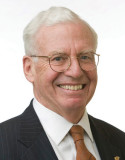
Stable and sustainable. Federal Reserve Bank through the Federal Open Markets Committee, its rate setting body, is tracking continued economic growth, employment expansion and positive inflation trends. Lots of data going both ways are logically reconciled to support Fed’s outlook. Commercial real estate is tracking positive as well. Mixed messages are appearing in a variety of real estate submarkets and anecdotal transactional data.
Gross Domestic Product (GDP) recorded (0.7) in first quarter 2017, disappointing and surprising most economic data crunchers. Scrambling to slice and dice underlying economic data and indicators, most finally Ok’d and said next, including the Fed. Importantly since first quarter GDP and revisions, generally positive economic data has persisted. Calls for new surveys, samplings and algorithms should get stronger. Of course any modifications in data collection or analysis will be subject to some kinds of retrospective methodologies and baffling initially.
The first 2017 Fed rate adjustment rippled through domestic and global markets. The second 2017 adjustment which is expected this summer will have ripples as well, many predictable based on precedents and many uncertain because of the market dynamics and passage of time. Commercial real estate markets are generally in stable condition. Balances in supply and demand for commercial real estate support prevailing fundamental economic trends. Increased caution and liquidity should further bolster commercial real estate during the Fed rate adjustments expected in 2017.
Even with the extraordinary run-up in the domestic securities market since the election and more recent daily adjustments, economic conditions might be characterized as stable and sustainable. Likewise, the commercial real estate market might be characterized as stable and sustainable, supported by moderate fundamentals. Beneath these broad generalities, micro action in property submarkets are experiencing a broad array of balancing actions in supply and demand that are best characterized by primary research, anecdotal evidence and analysis, reconciled with experience and expertise of the real estate professional. Even with the unprecedented second Fed rate increase at the March 2017 meeting, market stability seems an appropriate descriptor for the capital markets and the commercial real estate markets. Of course the pundits and the media opt for more excitement in their lexicon of descriptors.
National and global trends are generally supportive of a stable and sustainable domestic economy. Job gains have sustained economic fundamentals broadly and economic outlook has been stable. The Fed rate action during 2017 is expected to include two more rate adjustments during 2017. The next two Fed rate increases will also be without historic precedent as rates all move higher across the market. Further upward Fed action and concurrent adjustments in rates or spreads in fixed rates in the broader market are baked into longer term investments. Capital stack for commercial real estate will adjust; however, uncertainty is increasingly impacting sourcing and terms of capital for commercial real estate. Liquidity in real estate is already impacted.
David Kirk, CRE, MAI, FRICS, is principal and founder of Kirk & Company, Real Estate Counselors, Boston.








